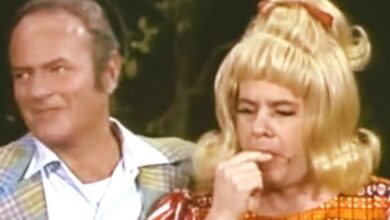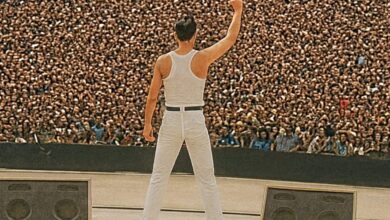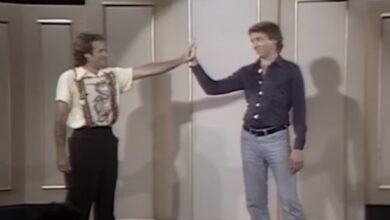Cat Stevens’ Glastonbury Rendition of “Wild World” Proves His Voice Is as Flawless as Ever, Turning a 53-Year-Old Classic into a Soulful Sing-Along That United Generations in a Truly Timeless Moment
When Yusuf / Cat Stevens stepped onto Glastonbury’s Pyramid Stage in June 2023, it was more than a performance—it was a homecoming. At 75, the folk-rock legend delivered a set that transcended generations, reminding everyone why his music continues to resonate. Opening with “The Wind,” Stevens immediately captivated the audience, setting the tone for a journey through his timeless catalog.
The crowd, diverse in age and background, responded with overwhelming enthusiasm. As Stevens played “Moonshadow” and “Where Do the Children Play?,” voices from the audience joined in, creating a harmonious chorus that filled the festival grounds. It was a testament to the enduring power of his songwriting and the universal themes he explores.
One of the most poignant moments came during “Wild World.” The song, released over five decades ago, felt as relevant as ever. The audience’s collective singing transformed the performance into a shared experience, blurring the lines between artist and fan. Stevens himself seemed moved, expressing gratitude for the connection he felt with the crowd.
Throughout his 21-song set, Stevens showcased the breadth of his musical journey. From early hits like “Matthew & Son” to deeper cuts such as “Sitting,” he offered a comprehensive look at his evolution as an artist. Each song was delivered with sincerity and a sense of purpose, reflecting his enduring commitment to his craft.
A highlight of the performance was his tribute to George Harrison with a rendition of “Here Comes the Sun.” The choice was fitting, as both artists share a spiritual depth in their music. Stevens’ interpretation was heartfelt, adding a personal touch to the beloved classic.
Stevens also took moments between songs to reflect on his journey. He spoke of his early days performing in Soho’s folk clubs and the path that led him to Glastonbury’s main stage. His anecdotes added a layer of intimacy to the performance, allowing the audience a glimpse into his personal history.
The setlist was thoughtfully curated, blending well-known hits with lesser-performed tracks. Songs like “Oh Very Young” and “Hard Headed Woman” were met with enthusiastic responses, while “Tea for the Tillerman” provided a moment of introspection. The balance of familiarity and surprise kept the audience engaged throughout.
Stevens’ voice, remarkably preserved, carried the emotional weight of each song. His delivery was both powerful and nuanced, demonstrating his continued vocal prowess. Accompanied by a skilled band, the arrangements stayed true to the originals while incorporating subtle updates that enhanced the live experience.
The visual elements of the performance were understated yet effective. Simple lighting and backdrop choices allowed the focus to remain on the music. This minimalist approach complemented Stevens’ style, emphasizing authenticity over spectacle.
Audience reactions were overwhelmingly positive. Many attendees described the performance as a highlight of the festival, citing the emotional resonance and communal atmosphere. Social media buzzed with praise, with fans sharing clips and expressing admiration for Stevens’ enduring talent.
Critics echoed these sentiments, noting the performance’s emotional depth and musical excellence. Reviews highlighted Stevens’ ability to connect with the audience and the timeless quality of his songs. The consensus was clear: Stevens’ Glastonbury set was a masterclass in live performance.
This appearance marked a significant moment in Stevens’ career, reaffirming his place in the contemporary music landscape. While he has taken extended breaks from performing in the past, his Glastonbury set demonstrated that his relevance and appeal remain undiminished.
The performance also served as a reminder of the enduring power of music to unite and inspire. In a festival known for its diverse lineup, Stevens’ set stood out for its sincerity and emotional impact. It was a moment where the past and present converged, creating a shared experience that transcended time.
For longtime fans, the set was a nostalgic journey through beloved songs. For newer listeners, it was an introduction to an artist whose work continues to resonate. Stevens’ ability to bridge generational gaps speaks to the universal themes in his music—love, peace, and self-discovery.
As the final notes of “Father and Son” echoed across the festival grounds, the audience responded with a standing ovation. It was a fitting end to a performance that had touched hearts and stirred memories. Stevens’ Glastonbury appearance was more than a concert; it was a celebration of a remarkable musical legacy.
In the days following the festival, the performance continued to garner attention online, with fans sharing their experiences and expressing hope for future appearances. Whether or not Stevens returns to the stage soon, his Glastonbury set has secured its place as a defining moment in his storied career.





